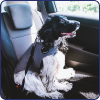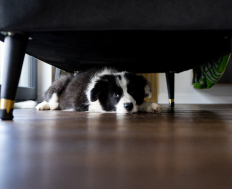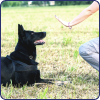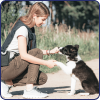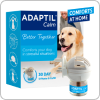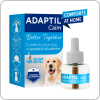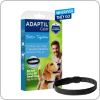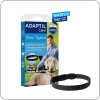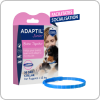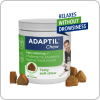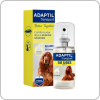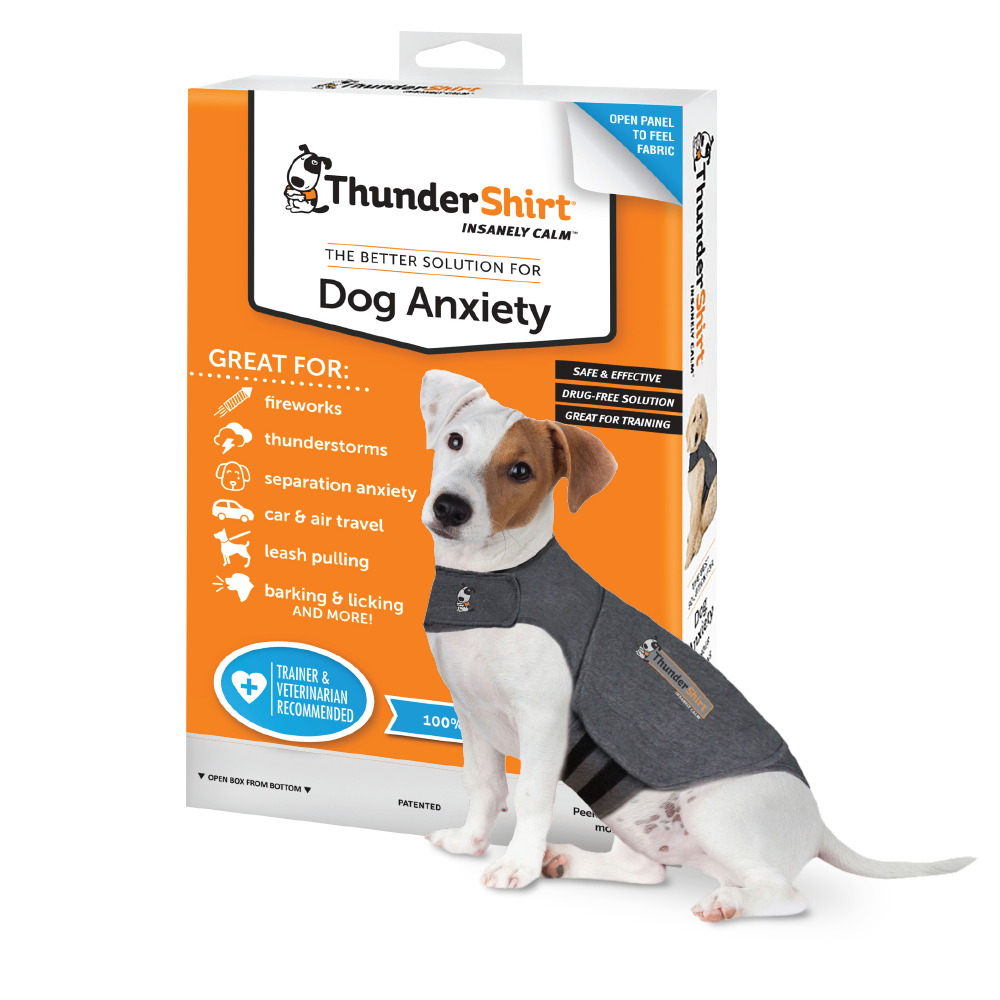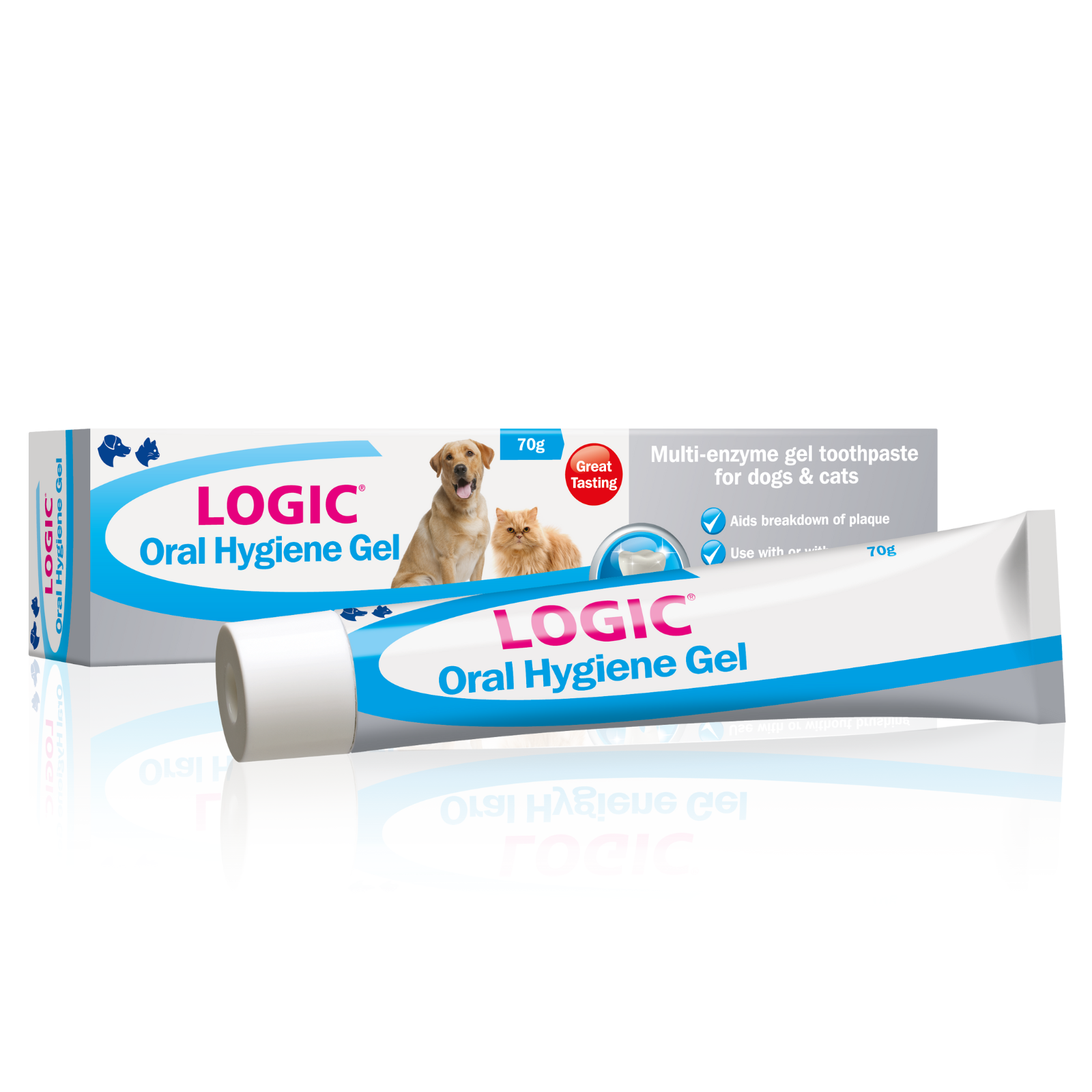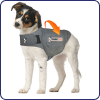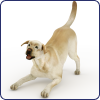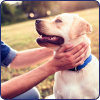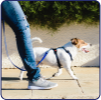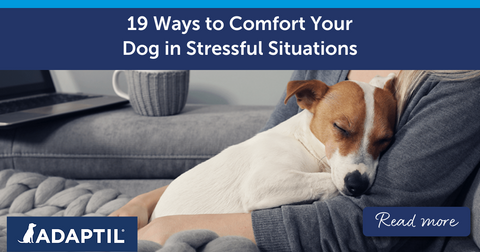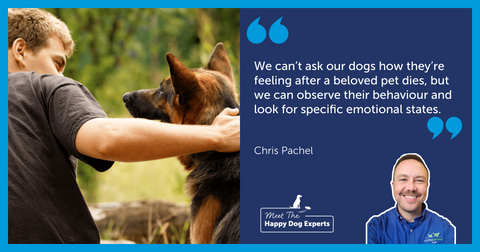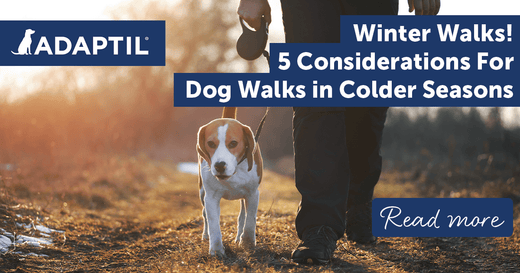
Winter Walks! 5 Considerations For Dog Walks in Colder Seasons
Walking your dog in colder seasons might not seem attractive when you are warm and cosy indoors and looking out on an overcast, wet day but exercise is important for your dog's wellbeing, and yours too!
It has benefits at any time of the year and is more than just an opportunity for your dog to relieve itself. Walking provides physical exercise, mental stimulation, and an opportunity to socialise with other dogs; it is also a motivator for you to have regular exercise, with very similar benefits.
Some people suffer from 'January blues' after all the festive celebrations, but on the positive side, January is also a great time to kick start new resolutions, and walking your dog more often could be one of them.
Quite coincidentally, January is also 'Walk your Dog' month! So what better way to start the new year than to get outside, whatever the weather, and enjoy that bonding time with your pooch.
Here are some tips for winter walking.
5 Considerations for Dog Walks in Colder Seasons
1. Dress appropriately
You: Wear bright colours or reflective clothing, as well as appropriate footwear that will cope well with slippery surfaces, or wet muddy fields.
Layer up with jumpers and overcoats, with a warm hat and gloves, but make sure you can easily access your dog's walking resources, like leads, treats, water bottle, poo-bags and any recall accessories you might need, like a whistle. Don't forget sunglasses as the winter sun can be very bright when it reflects off the snow. Have your mobile phone handy, just in case of emergency.
Your dog: Dog coats/jackets are practical in two senses. Not only do they keep your dog cosy and dry (particularly if they are a short-hair breed) but they also help to keep them clean! It's easier to pop a doggie jacket in the washing machine than get mud out of a dog's long coat!
Make sure the coat has a reflective band, or your dog is wearing a reflective collar/harness so that they can be seen in dim light.
2. Choose your time of day
Frequently, people take their dogs out for a walk early in the morning, before they go to work or school, but this may not be the best time during colder weather, as overnight temperatures may not have recovered and it might be slippery underfoot.
If possible, take your dog for a walk closer to midday or early afternoon when the temperatures might be higher and you and your dog will be more visible. If you are unable to get home at this time of day, you might consider using the services of a dog walker.
3. Safety considerations
- Consider walking with another person for safety and just in case of accidental falls in icy conditions.
- Keep an eye on the weather forecast and don't venture out if extreme weather is expected.
- If you have to walk your dog at night time, or in dim light, consider keeping your dog on a long lead for the duration of the walk; if you are walking in an unlit, or poorly lit, area you may lose sight of your dog.
- Take a torch with you or wear a head-light so that you can see your way around any obstacles.
- Know the terrain and don't walk in a strange place snow can look exciting, but drifting snow can have hidden dangers.
- Your dog may not be used to snow or very wet conditions, particularly if they are young. Different weather conditions can bring different sounds and noises that might scare your dog, so it is advisable to keep them on a lead in case they get spooked.
- Beware of icy conditions dogs can slip on icy surfaces too, particularly if they turn quickly. This is particularly important for older dogs who are not as agile and may have arthritic joints. It is also harder to walk in icy conditions, so take your dog's age and health into consideration.
- Avoid frozen ponds, but if your dog does wander on to an icy pond, it's important that you do not follow them! Good recall training is important to avoid such instances.
- If they do unfortunately fall through the ice, call the emergency services and calmly encourage your dog to swim towards you.
- Keep an eye on your dog's body language to make sure they are enjoying their winter walk. A common sign that they've had enough is when they start to pull back or refuse to go forward; their head may be down and their tail between their legs. Don't force them to stay out longer than they want to.
4. After your walk
You may be glowing and warm after a walk in the winter sun, but when you have finished your walk:
- Be prepared for your dog to finish a walk covered in mud! Before you go out, put some old towels and perhaps some paper on the floor to catch the dirt when you arrive home.
- Make sure you have a dry towel ready to wipe your dog down to get rid of excess water, particularly if they have been playing in the snow.
- Clean your dog's feet, legs and stomach on your return to remove grit/salt from pavements/roads, compacted snow, antifreeze etc. Make sure the skin between their toes is dry; if not dried thoroughly, it could lead to infection.
- Check your dog's paws for any injuries. You can't always see what's on the road/pavement if it is covered in snow, and your dog may have inadvertently stepped on sharp stones or broken glass.
- If you are in the car, have some warm blankets ready for them to lay on when they get in.
- Have water ready for your dog to drink they can get dehydrated in cold weather, too.
- Don't leave your dog alone in the car for any length of time, as temperatures can drop very quickly in winter.
- Ensure there is a warm and comfortable space for your dog to unwind in after your walk. Plugging ADAPTIL Calm Home Diffuser into the room where your dog spends most of their time will give them constant comfort.
5. It's not walking weather
If a long walk is not possible and the weather is so inclement you need to stay indoors, consider some indoor activities for your pooch, both physical and mental.
- Hone their training/recall skills.
- Play hide and seek with them around the house.
- A scent game will be popular, particularly when there's a treat at the end.
- Make an obstacle course around the house; stools to jump over, tunnels to run through or a den to hide in.
- A dog parkour could be a good alternative to a winter walk. Your dog will be introduced to the world of jumping, climbing, balancing over, crawling under, and going around different obstacles.
- Or try taking them to an indoor dog gym but do your homework and make sure these are well managed.
If you can fit in a shorter walk, make this more interesting for your dog by walking a different route that has different smells for them to discover. Keep them on a long lead if you are taking a new route so that they can explore new areas in their own time.
Are you interested in learning more tips for dogs in winter? Get in touch and we’ll be happy to share all the advice we can, plus tell you everything there is to know about the benefits of using ADAPTIL Calm Collars! You can also stay informed with our latest guides, Q&As, and general tips by signing up to our newsletter.
